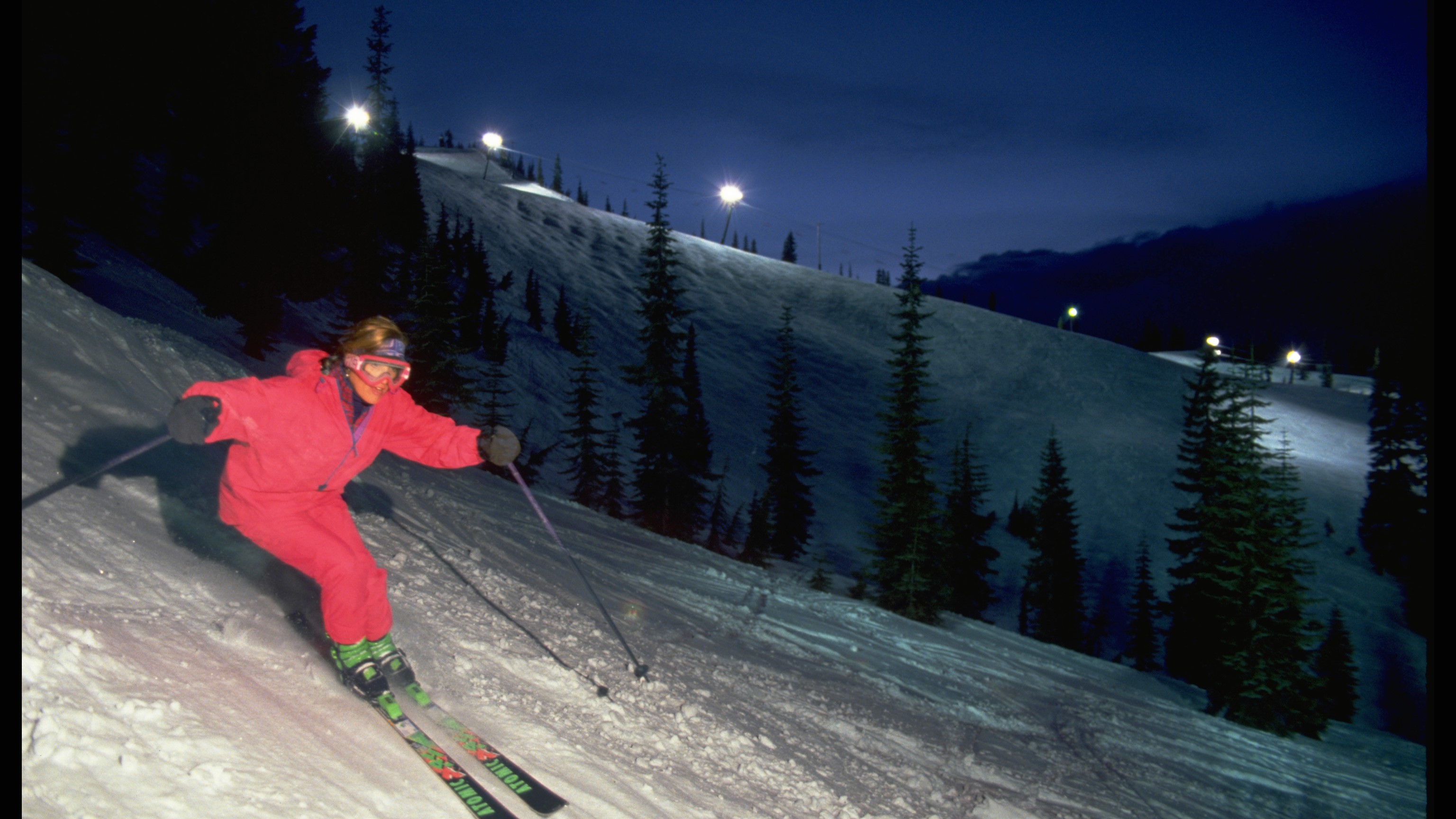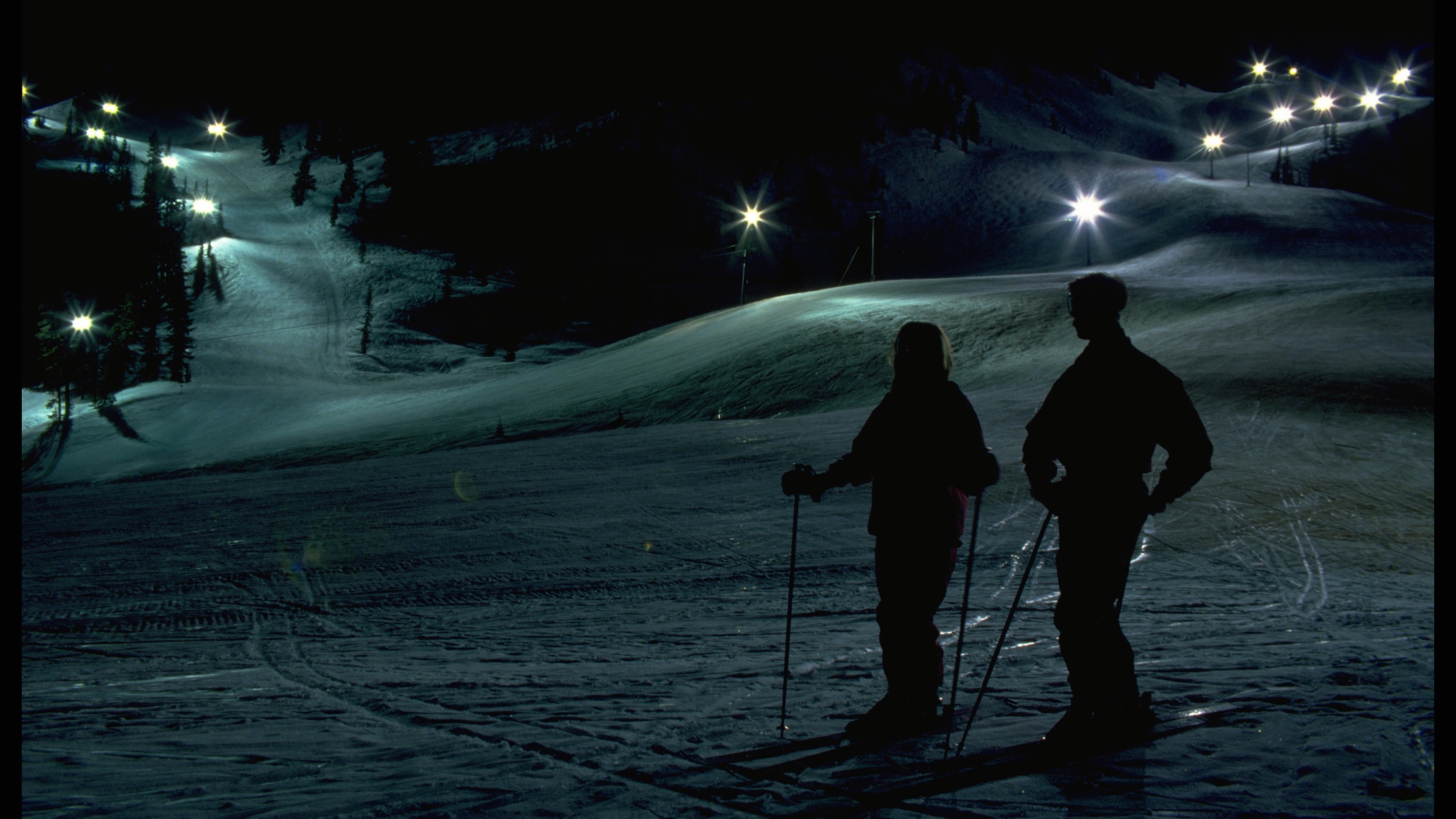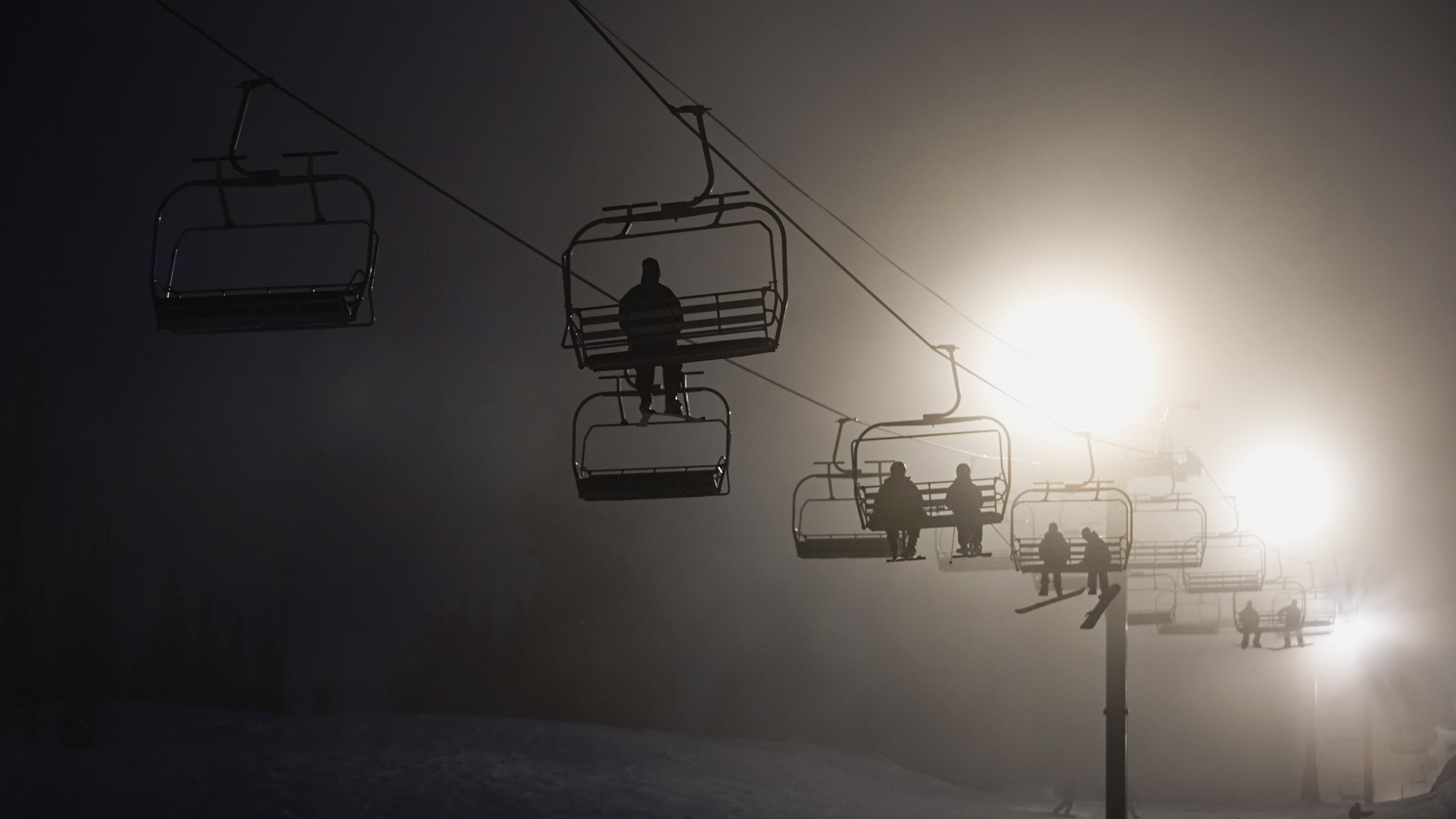Why you should go night skiing – and what you need for this magical nocturnal adventure
We shine a light on the advantages and disadvantages of night skiing, and how you’ll want to dress to prepare for a nocturnal adventure on the slopes

Do you ever wish you could enjoy your favorite ski resort without all the annoying crowds, long lift lines and overpriced lift tickets? It might seem like out-of-hours skiing belongs only to those who can afford to pay for First Tracks or are tough enough to work for ski patrol, but there is one way you can experience quieter slopes and chairlift rides without being a millionaire or getting up at the crack of dawn, and that’s with night skiing.
Night skiing might sound a bit too daredevil for your liking, and if you’re doing it in the backcountry, well, it really might be. But resort night skiing can be surprisingly accessible, and fun. In this article, we shine a light on the advantages and disadvantages of night skiing, and how you’ll want to dress to prepare for a nocturnal adventure on the slopes.
What is night skiing?
Night skiing is exactly what it sounds like – skiing after the sun goes down. That said, there are different ways to approach this sport.
Many ski resorts offer night skiing on certain nights of the week, reopening some of their lifts after last chair for a couple of hours. In this case, the resort will open limited terrain and use floodlights to light the runs, so it will be a different experience, but not necessarily especially dark.
Some intrepid skiers might also put skins on the bottom of their skis and ski uphill, then use headlamps to ski down, or even do so under a full moon. In the backcountry, this can be a breathtaking experience, though of course, you’ll want to be an experienced skier and have avalanche training.
It’s also common to skin up ski resorts after they’ve closed for the day and ski down after dark, if the resort has uphill access, but remember that grooming operations take place at night which means you could be at risk from machinery.

Is night skiing safe?
First off, skiing is an inherently risky sport, no matter what time of day you do it. In terms of visibility, if you’re night skiing on a floodlit slope, you should be able to see well so long as your ski goggles don’t have dark lenses, so make sure you switch to light lenses and take the first few runs slowly to get used to it. It’s crucial to stick to the designated runs only and not to disappear off into the trees, and of course adhere to the principles of skiing safety to avoid collisions.
All the latest inspiration, tips and guides to help you plan your next Advnture!
If you’re night skiing in the backcountry, doing so will certainly change your visual perception, but snow is white and if you’re under the stars and using a headlamp, you might actually see better than you do on a low light day or when you’re dealing with glare and brought the wrong lenses. Needless to say, you do so at your own risk, however, and it’s advised that you slow down and use extra caution, wearing goggles with clear lenses to protect your eyes. Always go with a friend, and tell someone where you are going.
Probably the main safety issue with night skiing, no matter where you go, is that it’s colder. That means you’ll need to dress appropriately (see below) and that the snow can be icier than usual, especially if it was warm enough to melt a little during the day and has recently re-frozen. For that reason, getting out immediately after sunset may deliver better conditions than waiting until it gets colder, while night skiing on a resort during or immediately following a storm can provide softer snow.

Why should I go night skiing?
There are a few real benefits to trying night skiing, if it’s offered at your resort. First and foremost, skiing down a quiet piste under the stars with the lights of the village twinkling below you is a magical experience.
On a practical level, if you live near a resort and work a regular 9 - 5 job, night skiing affords you the opportunity to get on the slopes during the week, which means you don’t have to do all your skiing on the weekends when the hoards are clogging up the runs. If there’s been a daytime storm, it could also mean you get first dibs on fresh powder.
Speaking of crowds, there aren’t likely to be any for night skiing. It’s true that there will be less terrain open, but you can typically count on a quieter experience in general.
Finally, night skiing is usually cheaper than day time skiing if you’re paying for daily lift tickets. Your season pass might not include it, however, so check before you go, but it can be a way to save on an otherwise expensive pastime.

How should I dress for night skiing?
In general, you’ll want to dress like you always do for skiing, but make some accommodations for the extra cold and lack of sunlight. When you’re going night skiing, gear up with the following:
- Insulated ski pants and thermal underwear.
- An extra fleece jacket to wear under your ski jacket (you may want to carry a dry base layer if you’re skinning up too).
- A balaclava or neck gaiter to cover your face.
- Hand warmers that can go inside your gloves and boots.
- Light lenses on your goggles for floodlit resort skiing.
- A headlamp just in case you find yourself in the dark, even on a resort.
Julia Clarke is a staff writer for Advnture.com and the author of the book Restorative Yoga for Beginners. She loves to explore mountains on foot, bike, skis and belay and then recover on the the yoga mat. Julia graduated with a degree in journalism in 2004 and spent eight years working as a radio presenter in Kansas City, Vermont, Boston and New York City before discovering the joys of the Rocky Mountains. She then detoured west to Colorado and enjoyed 11 years teaching yoga in Vail before returning to her hometown of Glasgow, Scotland in 2020 to focus on family and writing.

